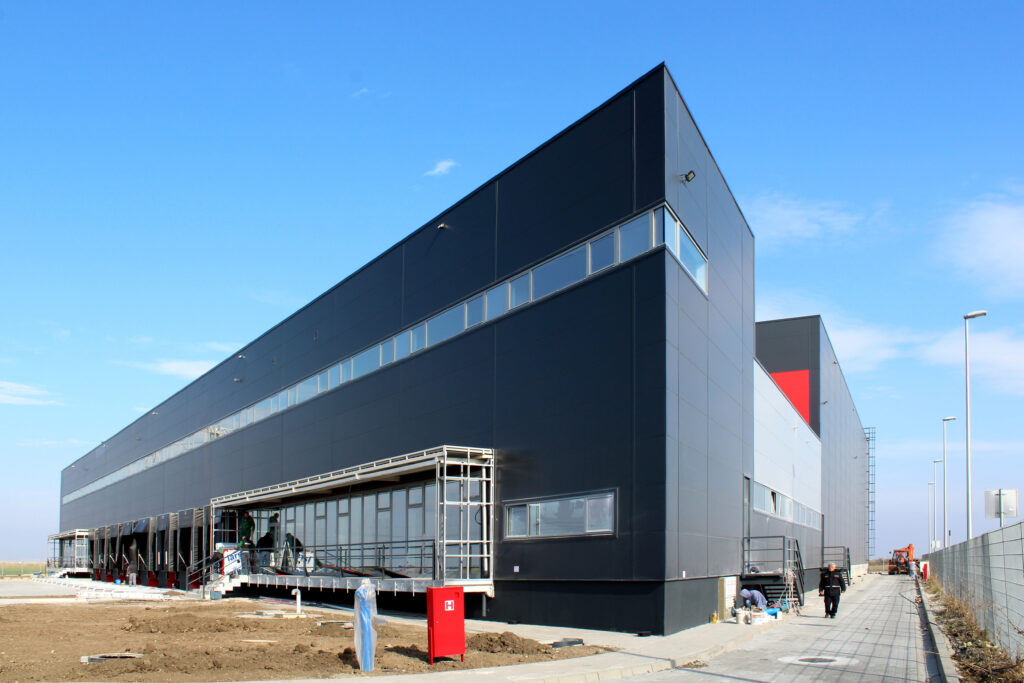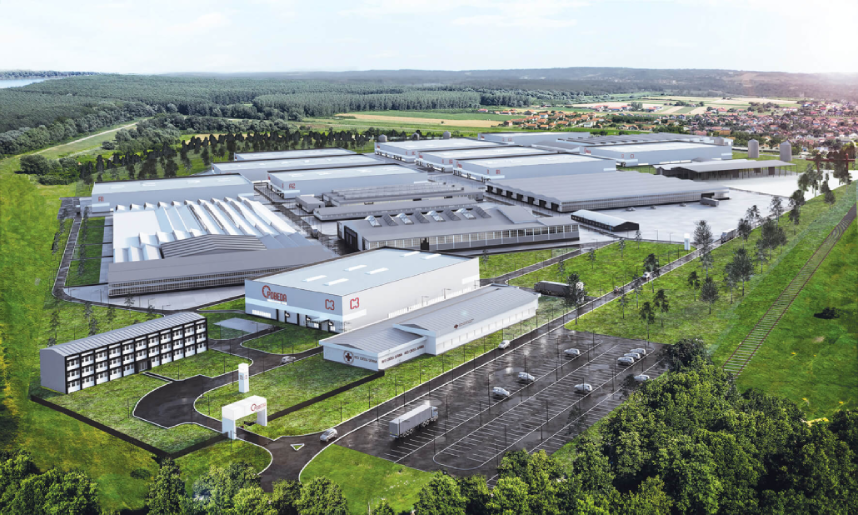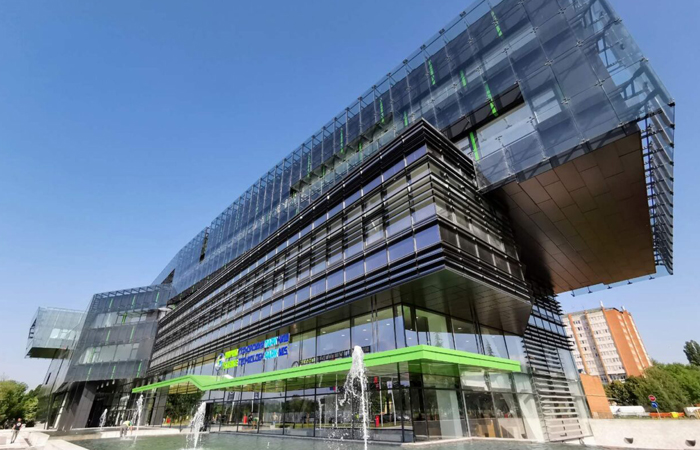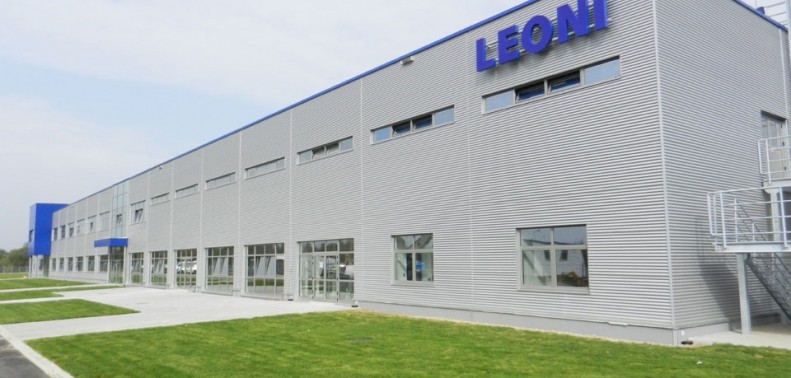Industrial Parks in Serbia: Investments, Advantages, and Key Zones

1. Introduction
Serbia attracts the attention of foreign investors due to its strategic location at the crossroads of Western and Eastern Europe, stable economy, and numerous opportunities for business development.
This article will explore what industrial parks in Serbia are, which ones are most promising for investors, and how to choose the right location for starting or expanding your business.
2. What Are Industrial Parks and Their Role in Serbia’s Economy?
Industrial parks are specially designated and equipped areas intended for hosting businesses from various economic sectors. These zones are characterized by developed infrastructure, convenient access to transport networks, and the availability of all necessary utilities, simplifying the process of starting and operating a business.
In Serbia, industrial parks play a crucial role in economic development. They attract foreign investors, stimulate regional growth, and create new jobs. Locating enterprises in such parks offers several advantages, including easy access to resources, tax incentives, subsidies, and administrative support from the government.
Serbia’s industrial parks often focus on specific sectors, such as the automotive industry, electronics manufacturing, logistics, textiles, or food production. This clustering approach enables businesses to collaborate effectively, making operations more productive and profitable.
Amid competition with neighboring countries like Hungary, Romania, and Bulgaria, Serbia offers investors a unique combination of economic incentives, low labor costs, and proximity to major European Union markets. As a result, the country’s industrial parks are becoming an attractive entry point for companies aiming to strengthen their presence in the region.
3. Key Industrial Parks in Serbia
Serbia is actively expanding its network of industrial parks, offering investors diverse options based on their objectives, industries, and locations. Below is an overview of the key industrial parks in the country that attract both international and local businesses:

3.1. Belgrade Industrial Park
Location:
Near Serbia’s capital, providing easy access to administrative centers and major transportation hubs.
Key Industries:
- Logistics
- Automotive industry
- Electronics manufacturing
Infrastructure:
- Modern warehouse and production facilities
- Direct access to highways and railway networks
- Proximity to Nikola Tesla International Airport
Resident Companies:
Information on resident companies will depend on the specific tenants operating in the industrial park, typically including logistics providers, manufacturers, and tech firms.

- Resident Companies:
- Fiat Chrysler Automobiles – An automotive giant utilizing the park for vehicle manufacturing and assembly.
- Siemens – A leading electronics and electrical equipment manufacturer with production facilities in the park.

Advantages for Investors:
- Prestigious location with well-developed infrastructure.
- Quick access to highly skilled professionals.
3.2. Novi Sad Industrial Park
Location:
Situated in Novi Sad, the second-largest city in Serbia, known for its vibrant economy and proximity to major transport routes.

3.2. Novi Sad Industrial Park
Location:
Novi Sad, the second-largest city in Serbia, renowned for its thriving IT sector.
Key Industries:
- Information Technology
- Research and Development
- Innovative Startups
Infrastructure:
- Innovation hubs and coworking spaces for high-tech companies.
- Modern production facilities.
Resident Companies:
- Schneider Electric DMS – A software development center for energy grid management solutions.
- RT-RK – A company specializing in software development and system integration.
Advantages for Investors:
- Strong IT ecosystem.
- High level of English proficiency among local professionals.
- Presence of universities supplying a steady flow of skilled talent.
3.3. Niš Industrial Park

3.3. Niš Industrial Park
Location:
The city of Niš, a southern industrial hub of Serbia, strategically positioned at the crossroads of major transportation routes.
Key Industries:
- Electronics
- Automotive manufacturing
- Textile industry
Infrastructure:
- Specialized production and research centers
- Access to railways and highways
Resident Companies:
- Johnson Electric – A manufacturer of electric motors and components for the automotive industry.
- Leoni – A German producer of cable systems for the automotive sector.

Advantages for Investors:
- Strategic geographic location beneficial for trade with Southern Europe.
- Support from local authorities, including tax incentives and subsidies.
3.4. Industrial Zones in Kragujevac, Subotica, and Other Cities
Kragujevac:
- The center of Serbia’s automotive industry, home to Fiat Chrysler Automobiles Serbia, which produces vehicles for the European market.
Subotica:
- A city in northern Serbia near the Hungarian border, making it highly attractive for logistics companies.
- Continental AG – A German automotive components manufacturer with a plant in Subotica.
Čačak:
- An industrially developed city specializing in mechanical engineering and textile production.
- Sloboda Čačak – A producer of weapons and military equipment based in Čačak.
Advantages:
- Promotes regional economic development.
- Lower costs for rent and labor compared to larger cities.
- Government support and access to local resources.
For more detailed and up-to-date information, it is recommended to visit the official website of the Serbian Development Agency: ras.gov.rs.
These industrial parks offer diverse opportunities for investors, considering their strategic locations, advanced infrastructure, and government support.
4. Why Invest in Serbia’s Industrial Parks?
Serbia provides foreign investors with a unique combination of economic and infrastructural benefits, making the country’s industrial parks one of the most promising locations for business operations. Here are the key reasons to consider this opportunity:
4.1. Tax Incentives and Subsidies
- Exemption from VAT and Customs Duties:
Companies can benefit from significant tax breaks on imported equipment and materials for production. - Reduced Corporate Tax:
Serbia offers one of the lowest corporate tax rates in Europe, at just 15%. - Job Creation Subsidies:
The government provides financial support for every job created, particularly in regions with high unemployment rates.
For more details about Serbia’s tax system, read our article.
4.2. Government Support
- Investment Agreements:
The Serbian Development Agency (RAS) actively assists investors, facilitating document processing and granting access to financial incentives and subsidies. - Business Support Programs:
Initiatives include developing small and medium-sized enterprises (SMEs), supporting innovative startups, and export-oriented businesses.
4.3. Advanced Infrastructure
- Modernized Industrial Zones:
Industrial parks feature state-of-the-art office, warehouse, and production facilities. - Transport Accessibility:
Proximity to highways, railway hubs, and airports ensures efficient and convenient logistics. - Energy Security:
Parks are equipped with stable energy systems and access to communication networks.
4.4. Low Labor Costs
- Serbia offers a skilled workforce at competitive rates, significantly lower than those in EU countries.
- Local professionals, especially in technical and engineering fields, maintain a high level of education.
4.5. Strategic Location
- Serbia is situated at the crossroads of major European transport routes, providing quick access to markets in the European Union, Russia, Turkey, and the Balkans.
- Free trade agreements with the EU, EAEU, and other countries make Serbia attractive for manufacturing and export.
4.6. Business-Friendly Environment
- Simple business registration processes.
- Minimal administrative barriers thanks to government digitization initiatives.
- Support for foreign investors at all stages of business operations.
4.7. High Liquidity and Investment Stability
- Real estate and assets in Serbia’s industrial parks demonstrate high liquidity due to strong demand from international companies.
- Serbia’s long-term economic growth prospects support the stability of investments.
For more information on starting a business in Serbia, read our article: How to Start a Business in Serbia.
5. Industries Thriving in Serbia’s Industrial Parks
Serbia’s industrial parks serve as strategic hubs for the development of various sectors. Their diverse specialization allows investors to choose locations that align with their business objectives. Here are the primary industries flourishing in the country’s industrial zones:
5.1. Automotive Industry
Serbia is one of Europe’s leading destinations for automobile manufacturing and component production.
Major Residents:
- Fiat Chrysler Automobiles in Kragujevac.
- Continental AG in Subotica.
- Leoni – producer of cable systems.
Products:
- Automobiles, electric motors, cable systems, automotive parts.
Advantages:
- Government support for automotive clusters.
- Well-developed transportation infrastructure for export.

5.2. Electronics and Electrical Engineering
This sector is actively developing thanks to international investments and a highly skilled local workforce.
Major Companies:
- Siemens – Manufacturer of electrical equipment.
- Johnson Electric – Producer of electric motors.
Products:
Electrical equipment, automation systems, components for household appliances.
Development Regions:
Belgrade, Niš, Novi Sad.
5.3. Logistics and Warehousing
Due to Serbia’s strategic location, industrial parks have become attractive for logistics companies.
Popular Parks:
- Belgrade – Close to the international airport and major highways.
- Subotica – Convenient access to the EU border.
Key Companies:
- DHL, Kuehne+Nagel.
Advantages:
- A well-developed network of highways and railroads.
- Integration with international logistics routes.
5.4. Information Technology and Innovation
Serbia is becoming a technological hub thanks to strong support for the IT sector.
Novi Sad Industrial Park:
- Innovation and research center.
- Companies: Schneider Electric, RT-RK.
Products and Services:
Software development, research solutions, management systems.
Reasons for Growth:
- High education levels among local IT specialists.
- Competitive service costs.
5.5. Food Industry
Serbia is renowned for its high-quality agricultural products, making the food industry a key area for investment.
Products:
Food products, beverages, semi-finished goods.
Popular Regions:
- Vojvodina – An agricultural region with developed infrastructure.
- Belgrade – Production and packaging for export.
Companies:
- PepsiCo, Coca-Cola HBC Serbia.
5.6. Mechanical Engineering and Metallurgy
Serbia has a long tradition in mechanical engineering and metallurgy, making these sectors essential in the country’s industrial parks.
Key Companies:
- Gorenje – Manufacturer of household appliances.
- Sloboda Čačak – Heavy machinery production.
Products:
Machines, equipment, metal structures.
5.7. Textile Industry
Industrial parks offer excellent conditions for textile companies due to an affordable workforce.
Products:
Clothing, textile materials, accessories.
Regions:
Niš, Čačak, Novi Pazar.
6. How to Choose an Industrial Park for Investment
- Business Goals: For manufacturing — well-developed infrastructure; for logistics — proximity to transport hubs; for innovation — Novi Sad or Belgrade.
- Location: Accessibility to EU and Balkan markets, regional specialization.
- Infrastructure: Modern facilities, reliable utilities, logistics capabilities.
- Workforce: Employee qualifications, labor costs.
- Incentives: Tax benefits, subsidies, government support.
Analyze regional conditions to select the zone that aligns with your business objectives.
7. Challenges and Risks for Investors
Although Serbia’s industrial parks offer numerous advantages, investors may encounter certain barriers. Being aware of these risks can help minimize their impact:
7.1. Bureaucracy
- Description: Processing documents and obtaining permits may take longer than expected.
- Solution: Work with local lawyers and consultants to expedite the process.
7.2. Shortage of Specialized Personnel
- Description: Some regions may lack a sufficient number of qualified workers.
- Solution: Choose zones near universities or invest in staff training.
7.3. Logistical Challenges
- Description: Despite a developed infrastructure, access to transport hubs may be limited in remote zones.
- Solution: Assess logistics costs before selecting a park.
7.4. Economic Risks
- Description: Dependency on external economic environments (e.g., trade relations with the EU).
- Solution: Diversify markets and account for currency risks.
7.5. Cultural Differences
- Description: Differences in business culture can be a challenge for foreign companies.
- Solution: Conduct employee training and study local business customs.
7.6. Possible Delays in Project Implementation
- Description: Construction of infrastructure or utility connections may take more time.
- Solution: Include a time buffer in the project plan.
Conclusion
If you have questions or wish to learn more about investing in Serbia’s industrial parks, feel free to contact us. We are happy to provide additional information and assist you in finding the best solution for your business needs.ю и помочь вам с выбором подходящего решения для вашего бизнеса.
About the Author
Dmitrije Bogdanović
a specialist at Business Serbia
